The picturesque Sturminster Newton Mill is one of several flour mills built along the River Stour. However, its position at the crossing point between the original Sturminster settlement to the north and Newton to the south makes it particularly crucial to the history of this area and the town it unites
by Lottie Hayton.
There are many signs that the area around Sturminster Newton has long been farmed and settled. Just over a mile away sits the Roman villa at Hinton St Mary, while 300 yards upstream from the mill is a medieval six-arched bridge, and another 100 yards on is an even older ford. Both the bridge and the ford are overlooked by what was once Sturminster ‘Castle’ but is now the ruined 14th-century manor given to Katherine Parr by Henry VIII.
The mill itself is thought to date to the 10th or 11th century; the Domesday Book of 1086 records four mills in the area. Settlers have long recognised the opportunity for production that the natural environment here provides. The River Stour, crucial to the mill’s operation, drains a large area of the vale, sustaining a steady flow of water throughout the summer.

Early 1900s, with the millers’ cottage in the background. Archive photographs from Sturminster Newton Heritage Trust
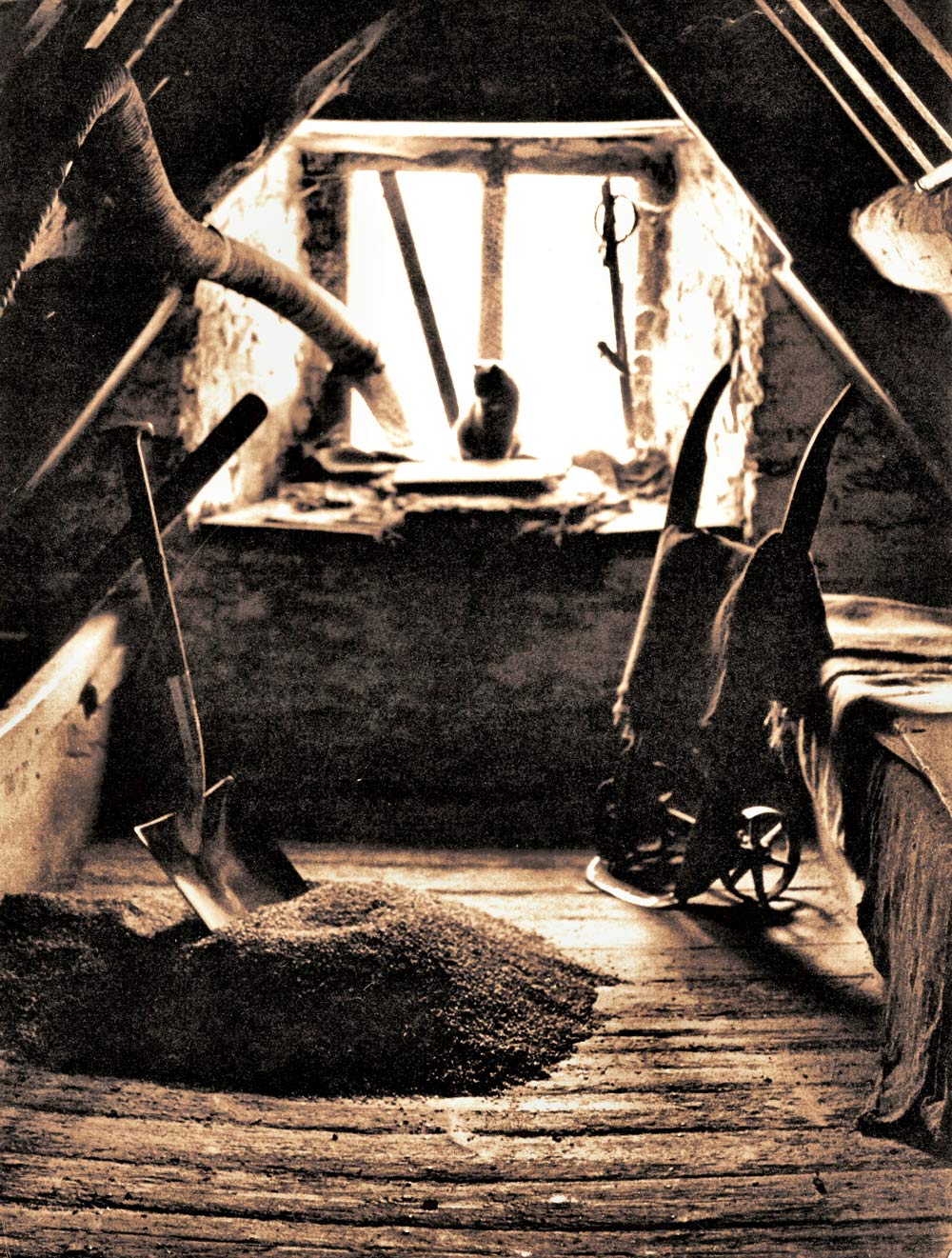
Archive photographs from Sturminster Newton Heritage Trust
The river is dammed at the point where the mill has been built and its flow is maintained and controlled by a mechanism of hatches and a rolling bay. Harnessing nature is never simple; winter flooding has consistently been a challenge, as indicated by the flood levels carved in the wall beside the front door.
In the early 1920s, a flood swept away the weir and the old millers’ cottage nearby had to be demolished to provide building materials. The present L-shaped building has two wings, the conjoining of which speaks to another series of challenges and adaptations in the mill’s history. The south wing, last re-built circa 1650 on the ancient site, housed the traditional mill but the north wing was built in 1611 as a ‘fulling’ mill.
This housed the technology for fulling woollen cloth, with water-powered fulling stocks hammering the fabric until it was felted enough to become waterproof. It was from here that the Sturminster Newton mill drove the rapidly growing swanskin industry, which connected North Dorset with Newfoundland, discovered by John Cabot in 1497.
Swanskin was a warm and waterproof cloth, making it perfect for the harsh Newfoundland weather. Prior to the development of the railways there was little means by which to transport milk to the cities and so North Dorset agriculture was dominated more by sheep than cattle.
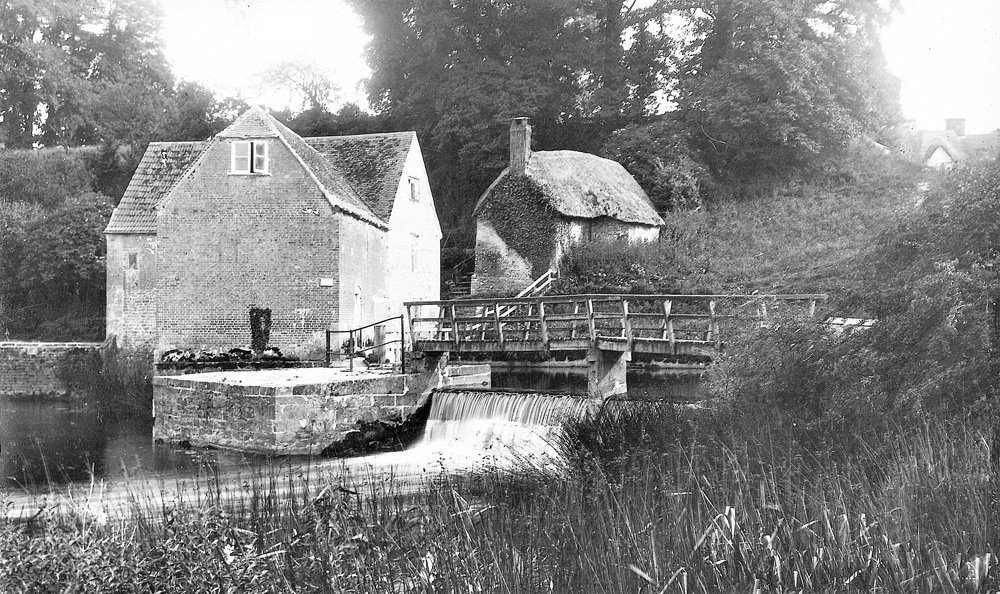
Early 1900s, with the millers’ cottage in the background. Archive photographs from Sturminster Newton Heritage Trust
The Blackmore Vale’s proximity to Poole, out of which much Newfoundland trade ran, similarly made it the perfect site for producing the cloth and, by 1793, approximately 1,200 people from Sturminster and the surrounding area were employed by the trade.
However, within the space of just a few years the trade collapsed, in part due to northern industrialisation and competition from new products. Interestingly, many of the cloth merchant families moved across to Newfoundland, explaining the continuation of dialect and surnames across the pond.
But back in Sturminster the only solution was to demolish the fulling mill and extend the grist mill, changing the building to its current form.
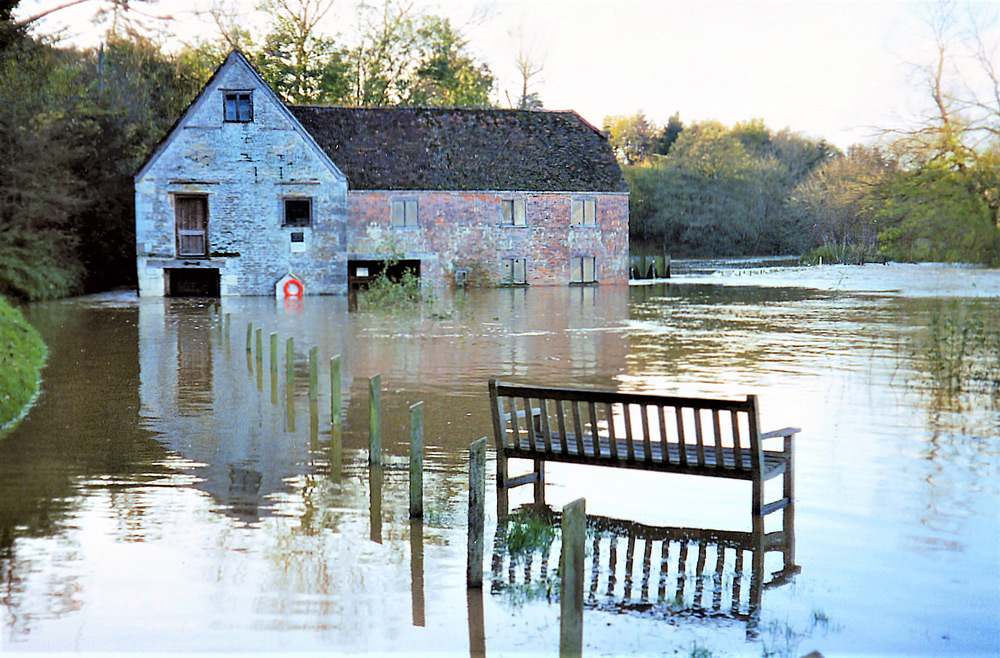
Floods in 2000
The pressure of competition continued to change the mill. Until the turn of the 20th century it was powered by two undershot water wheels, capable of a combined output of 12 horsepower. With the introduction of steam technology and the railway transport network, however, the mill needed an upgrade. In 1904 the two water wheels were replaced with a single water turbine, doubling the output.
Despite this and additional changes to the stones used for milling and the production of animal feed, in 1970 Blandford & Webb Ltd, operators of the mill, were forced to build a mobile mill and take the machinery out to farms. The mill itself was no longer needed and stood boarded up for 10 years.
Fortunately, its importance was recognised, and in 1980 the Mill Trust was formed with the aim of restoring the building to full working order.

Peter Loosmore surveys the incoming floodwater in 2008

Archive photograph from Sturminster Newton Heritage Trust
Initially several tenant millers worked there to restore and operate the mill. However, with the tightening of health and safety regulations, they were once again threatened with closure and so in 1994 Pitt-Rivers estates, owners of the mill, and the Town Council allowed the Sturminster Newton Heritage Trust to manage the mill as a visitor attraction.

A visit to the mill by the Harley Davidson Owners Club from Bridgwater in 2010
Today it still serves both the local community and those from further afield with events and exhibitions. That the mill has stood the test of time is testament to the generations who have constantly adapted and updated it to suit their changing world and the challenges it presents.
Thank you to the Sturminster Newton Heritage Trust (sturminsternewton-museum.co.uk) for providing us with access to their archival images and information on the mill.
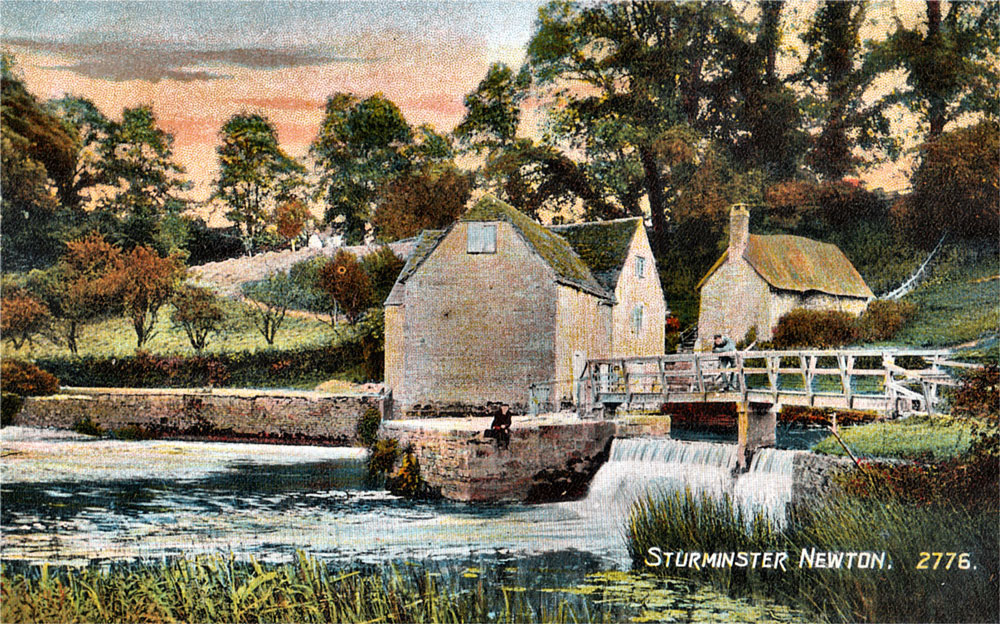


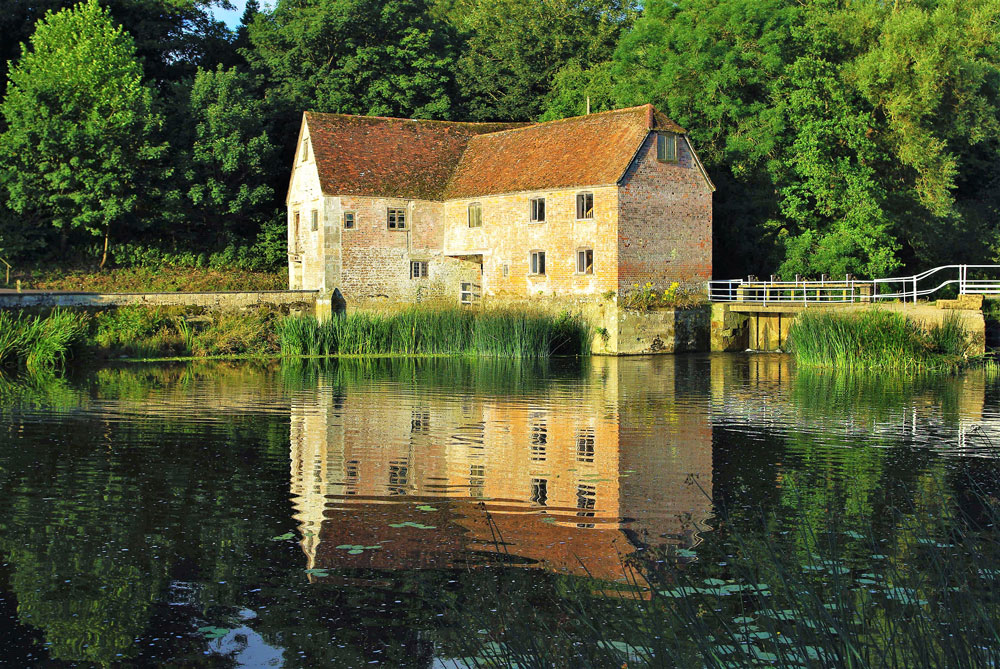








Leave a Reply